All additive manufacturing projects depend on 3D printing file types which determine the accuracy and compliance as well as the quality standards of your final creation. The universally used file types for 3D printing consist of STL, OBJ, 3MF, AMF, FBX, VRML and STEP. The selected file format determines how a 3D model stores its information as well as defines its data transmission and processing requirements for the printer.
Users who operate with 3D printing technology need to understand these file formats as a mandatory requirement. The following guideline analyzes prominent file types through their classification methods while forecasted trends of 3D printing progression until 2025.
What Are 3D Printing Files?
3D printing files are digitized 3D models that encode geometry, texture, color, and other object characteristics. These files enable 3D printers to assemble objects in layers, ensuring high precision in the final product. The attributes of a file format determine its quality, compatibility, and efficiency for printing.
Below is an explanation of the ten most common 3D printing file formats that every designer should understand. The 3D printer serves as a device to convert digital 3D models into physical three-dimensional objects through the use of 3D printing files. The numerous 3D printing file formats serve one universal purpose which is converting raw materials into tangible objects. The following text explores standard 3D printing file types while providing information about file generation methods.
Top 10 3D Printing File Types You Need to Know
Understanding the purpose of different 3D printing file formats helps in selecting the most appropriate one for your project. Below are the most widely used file formats in 3D printing:
1. STL (Stereolithography)
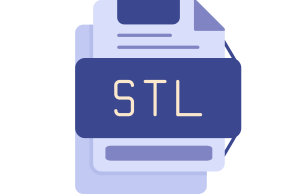
STL files contain 3D models in the form of a triangle mesh in the shape of an object without any color or texture information.
Advantages:
- Compatible with most 3D printers and software.
- Simplicity: Simple and lightweight
- Quick processing.
Disadvantages:
- It is poor in color, texture, and material properties.
- large file sizes can be attributed to models that possess a large number of elements or a tight meshing pattern
2. OBJ (Object File Format)
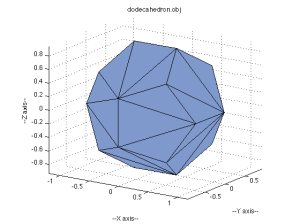
OBJ is a triangularized 3D model format based on vertex indices, and it also can contain normals, UV coordinates, Vertex colours and Material properties. Another advantage of using OBJ-specific files is that they have the ability to have texture mapping and full color 3D printing.
Advantages:
- Supports Colors and Textures suitable for Multi-color or Full-color 3D prints ready.
- Very flexible works well with 3D software from applications such as the blender, maya and Rhino.
- More Advanced Than STL provides UV mapping,smoothing groups, normals to improve the look of a model.
- Efficient Processing
- Lighter than some heavy file formats like FBX.
Disadvantages:
- Larger File Size Than STL due to added texture and color data.
- That is why you will come across printers and slicers that do not support the OBJ file format.
- Lacks Flexibility in Material and Texture – The software uses different files for material and texture and hence is not easily manageable.
3. 3MF (3D Manufacturing Format)
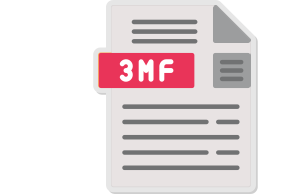
3MF (3D Manufacturing Format) is the contemporary file format for 3D printing, which has been created by the makers of the 3MF Consortium that consists of such key members as Microsoft, Autodesk, and Stratasys. Specifically, FSD was created to replace the shortcomings of STL by incorporating textures, materials, metadata, and measurement units but had a small file size.
Advantages:
- Less file size compared to STL and OBJ.
- Substrate and Color Data adds color and substrate characteristics which do not require links to additional texture files.
- Features that modern metafile formats contain information about scaling, rotation and printing of the model are also stored here.
- Open and Extensible format and is currently constantly being updated, and embraced by major investment industry players for usage.
Disadvantages:
- Currently, it is supported to a lesser extent compared to STL in 3D printers and slicing software.
- Model Amplitude is low and modification of highly complex models cannot be accomplished with simple tools or designs.
It is worth stating that 3MF is used less actively than STL, while it has numerous benefits to offer .
4. AMF (Additive Manufacturing File Format)
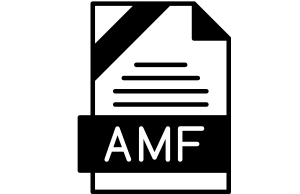
The XML-based AMF (Additive Manufacturing File Format) exists to improve upon traditional STL specifications. The file format enables output of color coding and material transitions and lattices thus making it perfect for multi-color production.
Advantages:
- Supports Color and Material Gradients – Enables more detailed, multi-material prints.
- The format enables better precision handling than STL especially for curved objects.
- The ease of implementation comes from the fact that software integrates with XML-based structure.
Disadvantages:
- Many 3D printers together with slicing platforms fail to recognize this file format.
- Advanced features within the structure make the development of Complex more complex than STL printing.
- The adoption rate for 3MF stands behind both STL and 3MF due to its lower recognition among users..
5. PLY (Polygon File Format)
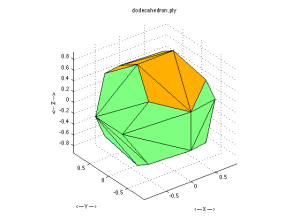
Research organizations together with medical departments and archaeologists use PLY for its original 3D scanning purposes. End-users benefit from PLY format because it provides support for maps of color and texture which enables the representation of detailed surfaces with precision in high-precision applications.
Advantages:
- The 3D scanning process benefits from this feature because it preserves detailed information in scan results.
- Supports Textures and Colors – Retains accurate color and texture data from scans.
- Wider practical uses for research combined with medical applications occur through its extensive adoption in scientific studies and medical imaging operations.
Disadvantages:
- Its main purpose is 3D scan visualization instead of production capability.
- Most available 3D printing software systems fail to support the slicer function properly.
- Scans with detailed data sizes lead to processing difficulties because of their extensive data volumes..
6. VRML (Virtual Reality Modeling Language)
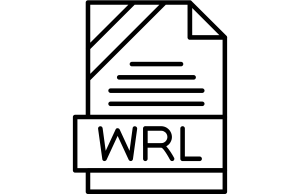
The web-based virtual environment utilizes the 3D file format called VRML. The 3D printing format finds widespread application for complete full-color printing and provides texture options and translucency and illumination features to support augmented and virtual reality solutions.
Advantages:
- The platform provides full-color printing support which enables photorealistic color rendition when a transfusion occurs.
- The file format supports full virtual environments that enable users to create interactive 3D models.
- Retains Transparency and Lighting Effects – Ideal for advanced 3D visualizations.
Disadvantages:
- The system primarily caters to digital applications since it cannot produce physical objects for manufacturing purposes.
- Standard 3D software lacks necessary functionalities to edit and slice models because this technology requires specialized software.
- Processing along with rendering can become slow because of detailed textures and rendering effects.
7. STEP (Standard for the Exchange of Product Data)
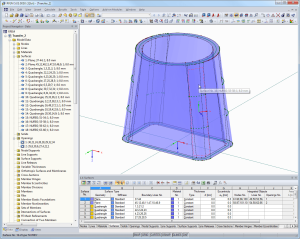
The standardized exchange format known as STEP (ISO 10303) serves as the standard data transfer method within mechanical engineering and product manufacturing fields. The STEP file system differs from STL format since it conserves both model surface data and maintains solid volumes together with parametric information along with precise geometric structure relations.
Advantages:
- Highly Accurate – Stores exact dimensions and geometric relationships.
- The tool works smoothly with CAD Software which allows professional design tools to operate together.
- Industrial 3D Printing along with CNC uses this file type as part of their complex manufacturing processes.
- Retains Metadata and Assembly Information – Supports complex multi-part projects.
Disadvantages:
- The file needs conversion into STL or 3MF format before it can be sliced for printing.
- The extensive nature of its contained data makes the file size heavier than STL or OBJ.
- Advanced software serves as a necessity since engineers use it instead of general hobbyists.
8. IGES (Initial Graphics Exchange Specification)

The IGES file format works as an older 3D model file type that streamlines the exchange of 3D models across dissimilar CAD programs. This format continues to find extensive use in engineering sectors together with manufacturing operations.
Advantages:
- Different CAD software programs can communicate more efficiently due to its functionality.
- Supports complex geometries and detailed surface data.
Disadvantages:
- Converting it to STL representation is necessary for 3D printing operations.
- This file format does not include color or texture functions which affects its usability in contemporary 3D model visualization processes..
9. FBX (Filmbox)
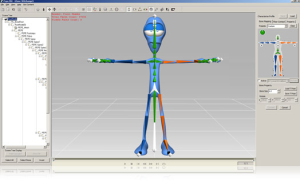
The company Kaydara created FBX before Autodesk acquired the software. The platform stands out for 3D animation and gaming and virtual reality because it allows skeletal animations and scene hierarchies.
Advantages:
- The software enables users to work with materials of different types and colors and textured models for creating authentic 3D designs.
- Animation data storage enables the system to become useful for simulation needs.
- The file format functions with Autodesk Maya alongside Blender together with various professional 3D modeling software applications.
Disadvantages:
- The extensive amount of stored data causes file sizes to become very large.
- A file conversion process must take place before utilizing such files for 3D printing slicer applications.
10. G-code
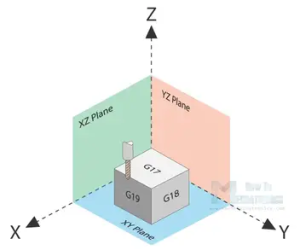
The 3D printer instructions known as G-code do not function as a model format because they direct printer movement while managing temperature and print speed. The device needs STL or other 3D file formats to create G-code through its slicing software application.
Advantages:
- Directly interpretable by most 3D printers.
- Users can achieve exact control for printer operations through the implementation of G-code.
- This series adjusts according to the selected materials in combination with specific printer conditions.
Disadvantages:
- Users cannot create G-code directly since this platform requires a 3D model for its generation.
- This format works only with single printers but fails to maintain compatibility between machines.
Classification of Common 3D Printing File Formats
3D printing file formats can be classified into different categories based on their capabilities and intended usage:
| File Type | File Extension | Supports Color/Texture? | Use Case | Widely Supported? |
| STL | .stl | No | Standard 3D printing format | Yes |
| OBJ | .obj | Yes | Textured and multi-material models | Yes |
| 3MF | .3mf | Yes | Advanced features with small file size | Growing |
| AMF | .amf | Yes | Advanced lattice and material definitions | Limited |
| PLY | .ply | Yes | 3D scanning and color data storage | Limited |
| VRML | .wrl | Yes | Full-color 3D printing | Limited |
| STEP | .step | No | CAD and manufacturing applications | Yes |
| IGES | .iges | No | Interchange between CAD systems | Yes |
| FBX | .fbx | Yes | Animation and game assets | Limited |
| G-code | .gcode | No | Printer-specific instructions | Yes |
How to Create 3D Printing Files for Your Project
To 3D print an object, you need an efficient and properly designed 3D model, which must be saved in a compatible file format. Follow these steps:
1. Choose the Right 3D Modeling Software
- Free Software: Blender, Tinkercad, FreeCAD
- Professional Software: Autodesk Fusion 360, SolidWorks, Rhino
2. Design Your 3D Model
- Outline the design, ensuring accurate geometric features and measurements.
- Use parametric modeling for greater precision and control over shapes.
3. Optimize for 3D Printing
- Ensure the geometry is manifold (i.e., no holes or leaks).
- Check wall thickness, overhangs, and necessary support structures.
4. Export to the Right File Type
- STL – Universal compatibility for simple models.
- OBJ or 3MF – For models with color and texture.
5. Generate G-code
Once the file is ready, use slicing software to generate G-code, which the 3D printer will execute.
How to Resize 3D Printing Files
Sometimes, 3D models need scaling to fit printer dimensions or optimize material usage. Follow these steps:
1. Use 3D Modeling Software
- Import the STL file into software like Blender, Fusion 360, or Meshmixer.
- Use the scale tool to resize while maintaining proportions.
2. Adjust in Slicing Software
- Many slicers, such as Cura and PrusaSlicer, allow scaling.
- After resizing, check wall thickness and fine details.
3. Verify Printability
- Perform error checking to ensure model integrity.
- Export the resized file in STL, OBJ, or 3MF format.
Order a 3D Print and Get a Quote
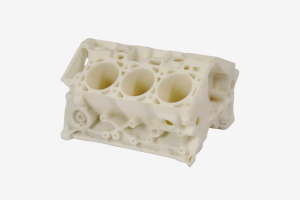
If you don’t own a 3D printer or require professional-quality prints, consider outsourcing to LTC Proto.
Why Choose LTC Proto’s 3D printing services?
✔ High-Quality 3D Printing – Uses SLS, SLA, and FDM technologies for industrial-grade parts.
✔ Multiple Material Options – Choose from plastics, resins, and metals based on project requirements.
✔ Fast Turnaround & Competitive Pricing – Affordable pricing with quick production times.
✔ Expert Consultation – Get guidance on design improvements and material selection.
How to Get Started:
- Visit LTC Proto.
- Upload your 3D printing file (STL, 3MF, OBJ).
- Receive an instant quote and place your order.
Recent Advances in 3D Printing File Formats for 2025
As the demand for additive manufacturing grows, new 3D file formats are emerging to meet industry needs. Some recent advancements include:
- 3MF format is becoming the preferred choice over STL due to its smaller file size and ability to store detailed metadata for more precise printing.
- Self-healing and self-optimizing features in software now enhance 3D models for better print quality.
- Blockchain technology is being integrated into file formats for intellectual property protection and authorized authentication.
FAQs
Which file formats dominate the 3D printing industry?
Most 3D printers support STL, OBJ, and 3MF due to their broad compatibility.
- STL is best for basic printing and remains the most widely used format.
- OBJ is preferred for color and texture-rich 3D prints.
Which file format provides the best performance for 3D printing?
- For general use: STL is universally accepted.
- For multi-material prints: 3MF is the best option.
- For high-precision CAD applications: STEP or IGES is recommended.
Which file format is optimal for industrial 3D printing?
- STEP and IGES are the primary CAD file formats used by professionals.
- However, 3MF is gaining popularity in industrial applications due to its advanced capabilities.
Conclusion
Choosing the right 3D file format is crucial for achieving the best results in 3D printing file types. Understanding the differences between 3D printing file types including STL, OBJ, and 3MF will help you make informed decisions based on your printing needs. As 3D printing technology continues to evolve, new file formats will drive further advancements in the industry.
Looking for high-quality 3D printing services? Upload your file to LTC Proto and get a quote today!
